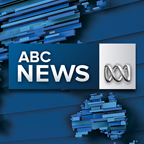
It was hotter than hell for the drivers and participants who wondered what they had "gotten themselves into", but 25 years later, the inaugural Adelaide 500 is being celebrated as a catalyst for change across the Supercars Championship.
Once described by legendary race commentator Murray Walker as "the best touring car event in the world", the four-day motorsport carnival is renowned for being a spectacle both on and off the track.
Greg Murphy drove in 400 Supercar races and won 28 of them, including four at Bathurst.
The official "fanbassador" for this year's Adelaide 500 came second in the inaugural event in 1999, which was established on the former Formula 1 circuit after the international event infamously shifted to Melbourne.
"It had that history surrounding it, a legendary icon status, so for Supercars to then take over the Parklands circuit and then have it as their own, considering it was born for Formula 1, that itself was special" Murphy told ABC Radio Adelaide.
The race was established on a shortened version of the Formula 1 street circuit, with 500 kilometres to be raced over two separate days involving 78 laps each.
There was also a parc fermé in place, meaning there was a curfew and heavy limits on any car maintenance or repairs after the first race on Saturday.
Murphy said when the first race was held, many wondered "what the hell we had gotten ourselves into?"
"How someone could come up with such a concept just seemed completely barmy," he said.
But following the "carnage that ensued on the first day in Saturday", he said the idea of a parc fermé was effectively thrown "out the window".
"The cars were worn out, the brakes had had it, the drivers were destroyed," Murphy said.
"It was just such a learning curve for everybody to do a race distance like that."
Craig Lowndes won the inaugural Sensational Adelaide 500 for Holden in 1999. (Supplied: Supercars Championship)
He said the conditions that weekend made it "incredibly difficult" for drivers.
"It think it was about 900 degrees in the cars," Murphy said.
"Everyone was on oxygen, trying to get drips put in their arms and dehydration everywhere. It was phenomenal."
Supercar races at Bathurst and Sandown do involve distances of 1,000km and 500km respectively, but, unlike the Adelaide event, the cars must have multiple drivers.
Gaining notoriety
The circuit was tweaked with the removal of an awkward chicane to create Turn Eight — a notoriously challenging, 210 kilometres-per-hour righthander that has since claimed many vehicles.
Five-time Supercars champion Mark Skaife said it was probably the "wildest corner in Australian motorsport".
"Peter Brock used to say that great racetracks have got consequences," he said.
"This is what this one's got — if you make a mistake, it bites you and it bites you hard.
"It's unforgiving, it's got a hero corner … it's the reason people ride big waves or jump out of planes — we love it."
Craig Lowndes, a three-time championship winner who won Bathurst seven times, was the winner at Adelaide's inaugural race in 1999.
He described Turn Eight as a "hold your breath" corner.
"We can't talk about Adelaide without talking about the infamous Turn Eight," Lowndes said.
"Thankfully, I never went in there, but teammates have."
He said Adelaide was the first race where drivers realised they needed to increase their level of fitness and mental strength to be successful.
"When you walk back into the paddock on the Sunday morning with blisters on your hands, sore feet, a sore back, and knowing that you've got to another 78 laps, it's brutal," Lowndes said.
"Physically, this is as tough as it gets for the drivers."
Holden verses Ford rivalry was a big part of the Adelaide 500 until Holden moved offshore to make the ZB. (Facebook: Red Hot Shotz Sports Photography)
Drawing a crowd
The first race in 1999 drew what was a record crowd of 158,000 people for the Australian Touring Car Championship.
Rising crowd numbers in the following years prompted organisers to turn what was a three-day event into a four-day event that attracted more than 200,000 people in 2003, and a record of 291,000 in 2008.
But in 2020, when it drew its lowest crowd in 17 years of 206,000 — still the largest crowd of any Supercar event in Australia — it failed to impress the South Australian Tourism Commission and former Liberal government.
After originally postponing it due to COVID-19 restrictions in 2021, the government later announced it was scrapping the race altogether.
It was brought back by the current Labor government to fulfil an election pledge in 2022.
The Adelaide 500 is also popular for its off-rack entertainment, such as live music. (Supplied: Adelaide 500)
Murphy said the Adelaide 500 set a standard that every other event in Australia could use as a benchmark.
"We've had other examples that haven't worked anywhere near as good as what this event, and this circuit, has," he said.
"The location of it to the city, the Parklands, the semi-street, semi-permanent circuit it's got set up, it's quite unique and just incredibly special to everyone that's ever come here.
"Adelaide, South Australia, really has this amazing asset that's revered around the world in motorsport.
"It put [Supercars] on the map."
The Adelaide 500 started on Thursday and finishes on Sunday.









 Add Category
Add Category